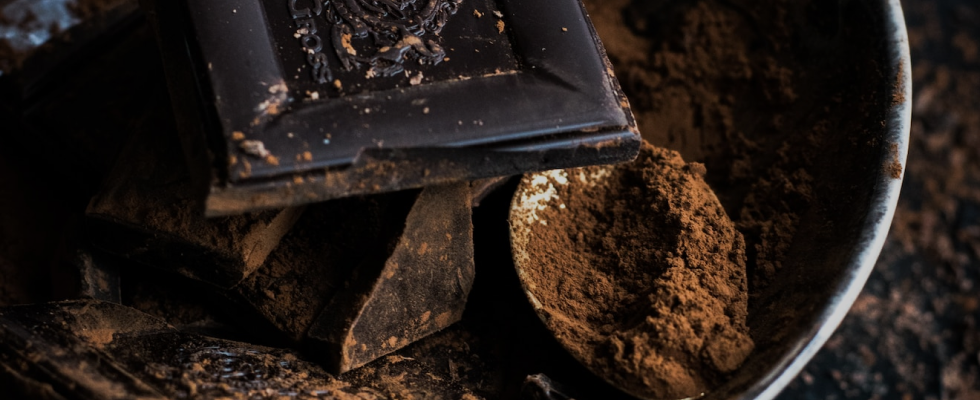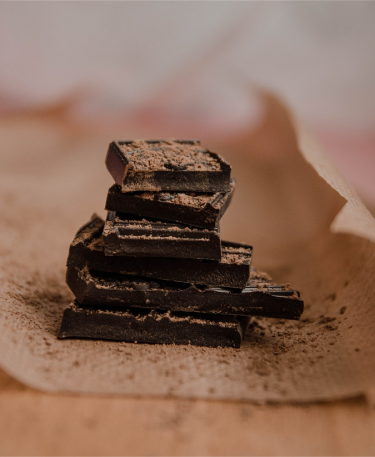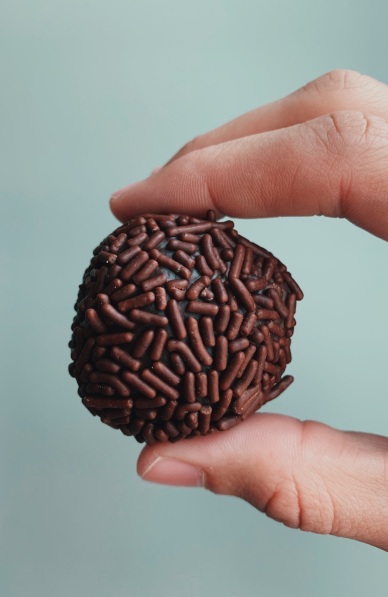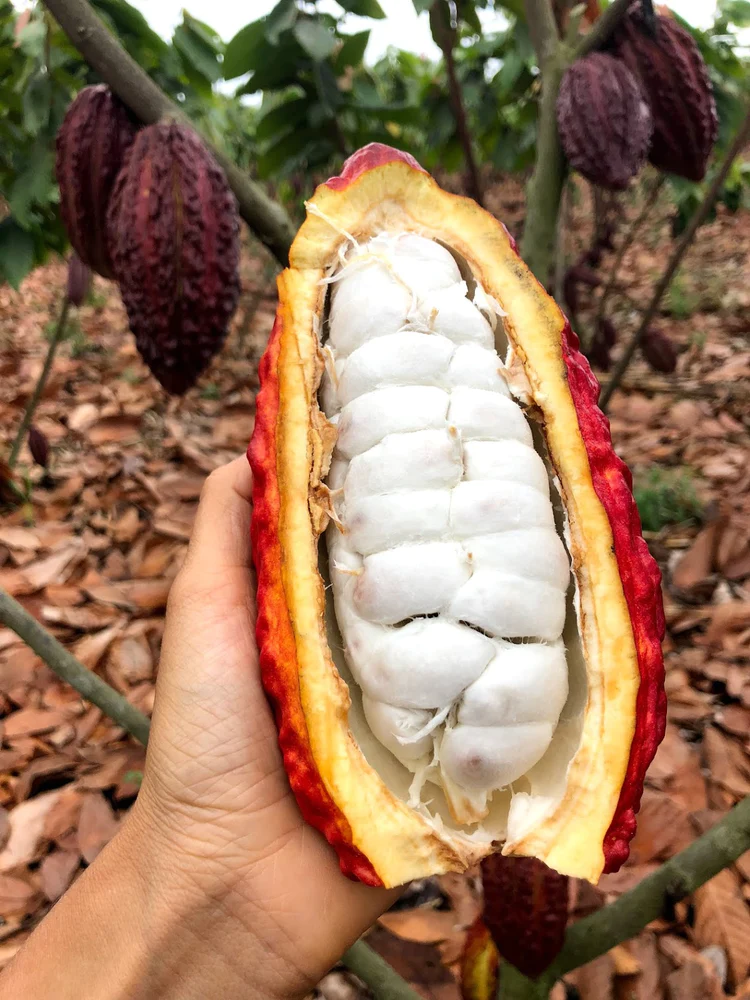
Every bite tells a story.
As the rich chocolate melts in our mouth, a journey begins.
We travel to its native land. South America, West Africa and beyond.
Just like quality grapes make fine wine, cacao nibs and seeds make fine chocolate.
The Cacao farmer leaves his mark. So does the wind, the rain, and the sun.
As we unwrap an elegantly wrapped chocolate bar, we taste how it came to be.
The skill and specific techniques artisans use in the fermentation, drying, roasting, grinding, and tempering processes make each craft chocolate bar truly unique.
Answering the question “What is craft chocolate?” is not as simple as describing a thing. There is a multifaceted industry and community behind craft chocolate, and in order to understand it, you need to see the whole picture. Allow me to paint it for you.

Craft chocolate goes by many names: bean-to-bar, small batch, craft, artisan, fine chocolate, micro-batch chocolate, and more; whatever you call it, each boils down to the same idea of a new and better way of making chocolate.
Although some terms are older than others, all of them refer to a small-scale chocolate making movement. It began in earnest in the 1990’s and gained momentum around 2005-2007, and now counts itself as having as many thousands of small chocolate makers all around the world.
In the 1980s customers began to demand insight and accountability into their foods. The craft chocolate industry was waiting for this signal and paired increased transparency with dramatically better quality over the next twenty years. The mid-2000s saw an explosion in the number of craft chocolate makers which continues to this day.


Craft chocolate demands a higher-quality bean, and creates demand for a wider variety of beans types. This has a positive impact on the farmers in cocoa growing countries by switching the incentives away from mass monoculture production. The shift to a higher-value product allows cocoa farmers to take more care with their production, fermentation and drying methods, while protecting the workers and safeguarding the natural environment.
The past ten years have seen the world of craft chocolate makers become truly diverse. Around the world people have started making bean to bar chocolate, most of whom stumbled into chocolate making from a whole other career path. We are just now experiencing the rise of second-generation craft chocolate makers. Some chocolate makers started their careers as chocolate makers or inherited a family business, but for most this is a second career and passion. This has resulted in a very culturally disparate but decidedly united group of chocoholics finding common ground in cacao grown around the world.
Recently there’s also been major growth in the value-added sector of craft chocolate. This means that people are making chocolate in the same country in which the cacao they use is grown (but not necessarily in the same part of the country as the cacao is grown). In countries outside of North America and Europe, as well, chocolate making has rapidly grown in popularity, notably in Ecuador, Peru, Japan, and Taiwan.
Chocolate made from raw cacao beans sourced transparently, made with a strong emphasis on the inherent flavor of the beans.
Containing no vegetable fat other than cocoa butter.
Our quest to recognize the world’s best craft chocolate begins with our international chocolate awards experts who sample hundreds of bars and bonbons in a blind tasting pursuit of the best chocolate in the world. This year featured audacious new inclusions like chili mango milk chocolate and lavender-infused dark chocolate. We discovered chocolate artisans embracing single-origin craftsmanship to create bars highlighting individual terroirs and handmade bonbons combining creativity and tradition. Our Golden Bar and Golden Truffle winners wowed us with chocolate excellence across every category.
See the winners +
Our international chocolate awards set out each year to answer the question – what is the world’s best chocolate? Through exhaustive blind tastings, our expert judges sample hundreds of chocolate bars and bonbons from over 50 countries. We focus intently on identifying standouts that demonstrate remarkable creativity, innovation, and craftsmanship.
The chocolate universe that emerges through our process amazes us annually. We revel in sampling from chocolate icons who have perfected the same bonbon recipes for generations. Their chocolate reflects patient mastery and their pursuit of timeless, smooth perfection. But we also delight in bars from emerging bean-to-bar chocolate stars. Their daring flavor combinations and single-origin sourcing showcase chocolate’s vanguard who think outside the box.
In 2023, our coveted awards provided a snapshot of today’s dynamic chocolate landscape. Our Golden Bar winners for best chocolate bar came from a dedicated Peruvian chocolate maker focused on ethically single-origin cacao, and turning those beans into chocolate that reflects the land’s unique terroir and an American team making dark chocolate which revolutionizes the tasting experience with tasting notes ranging from red currant to black tea that exemplify how chocolate bars connect place to flavor. We also presented the Golden Truffle award to an imaginative chocolatier crafting bonbons rightfully described as “a miracle in a box.”
Our 2023 winners remind us that chocolate mastery transcends geography and ephemeral trends. Whether honoring time-honored tradition or encouraging bold innovation, our international chocolate awards aim to identify the visionaries shaping the future of chocolate. The accomplished artisans we honored this year motivate us to continue sampling the world over in search of emerging chocolate talent deserving of recognition. Every year awards celebrate chocolate’s past, present and future – and we look forward to discovering what lies ahead.